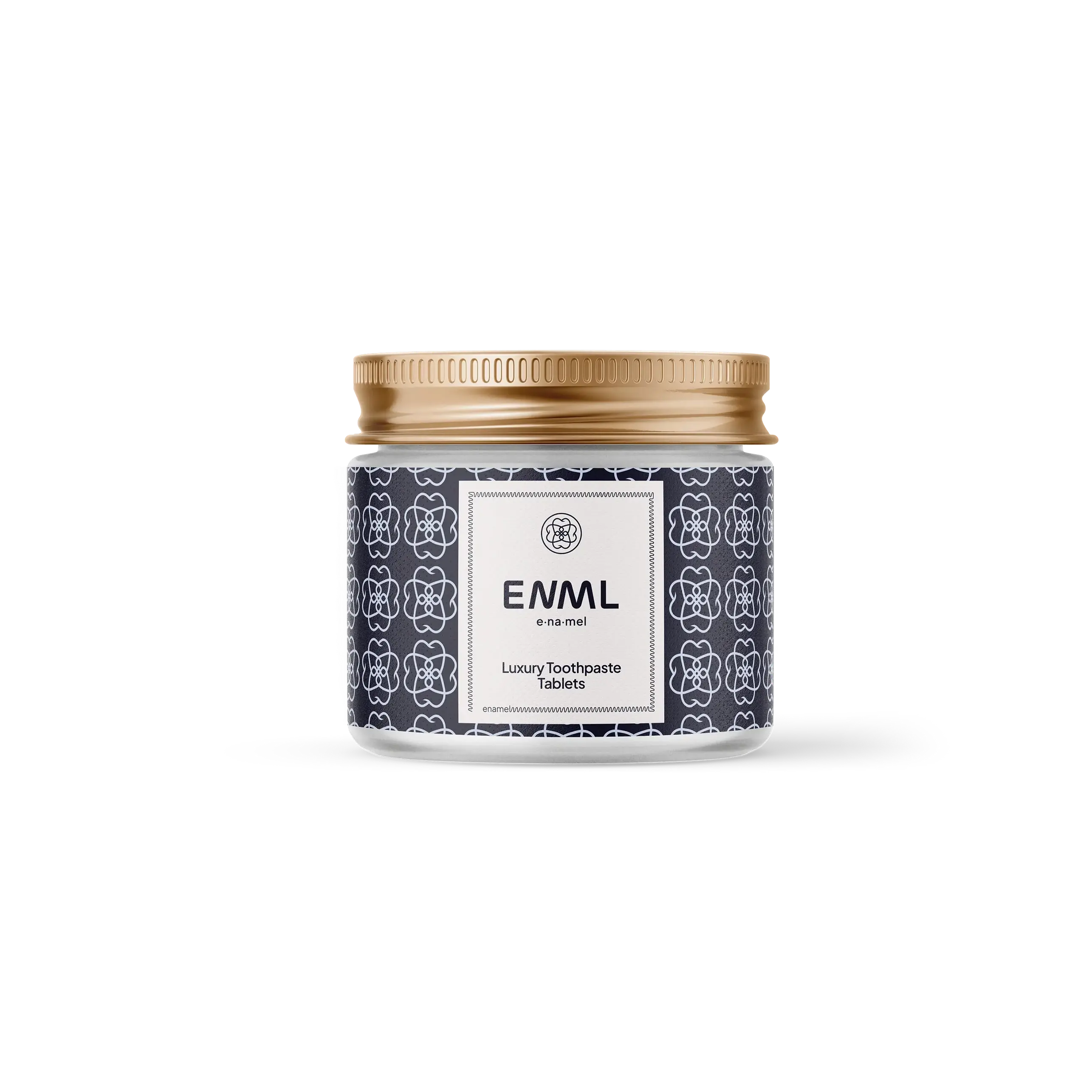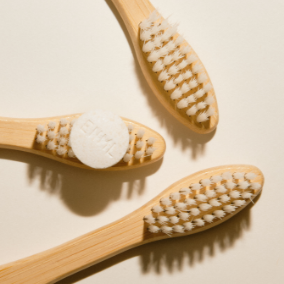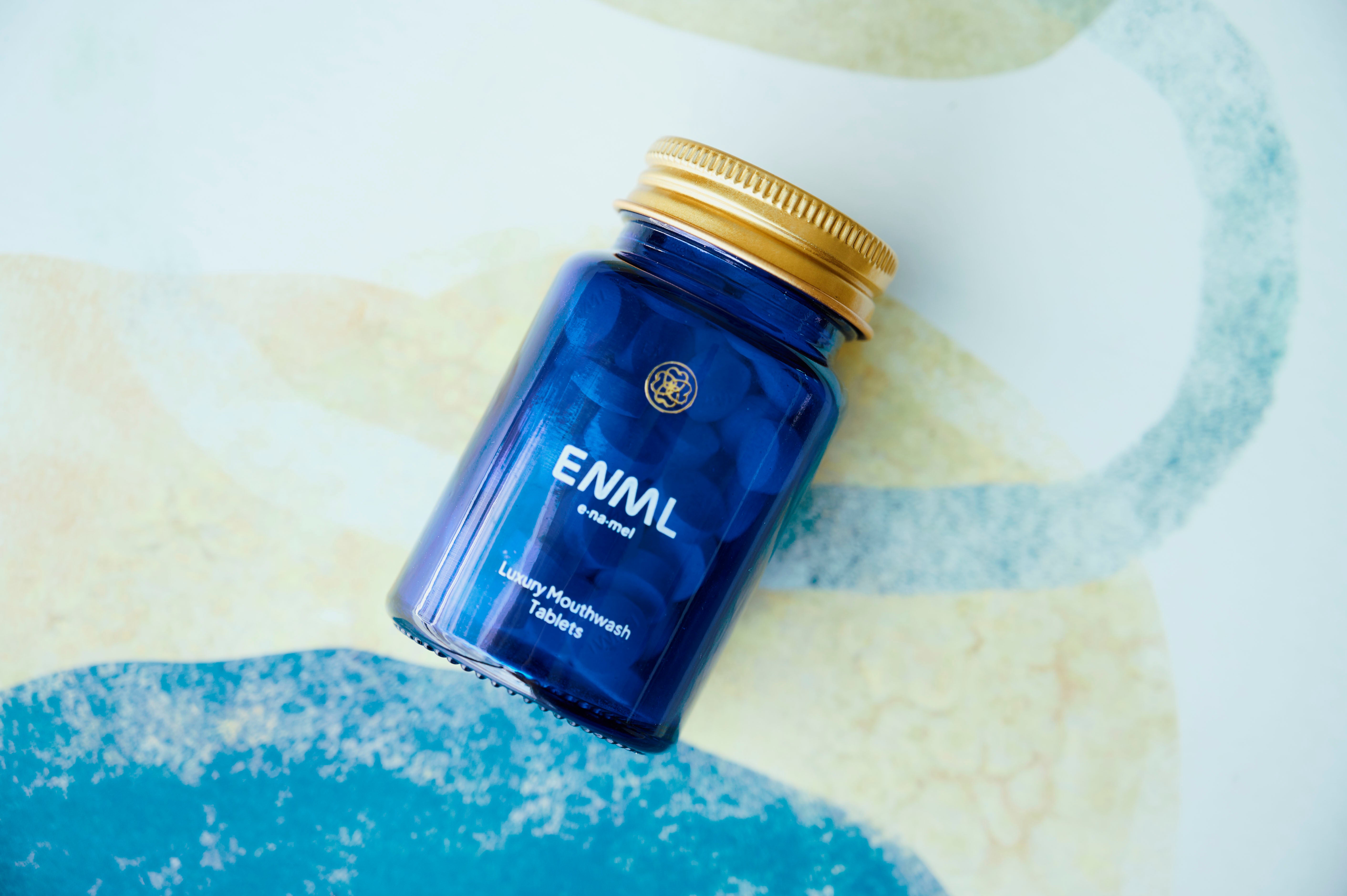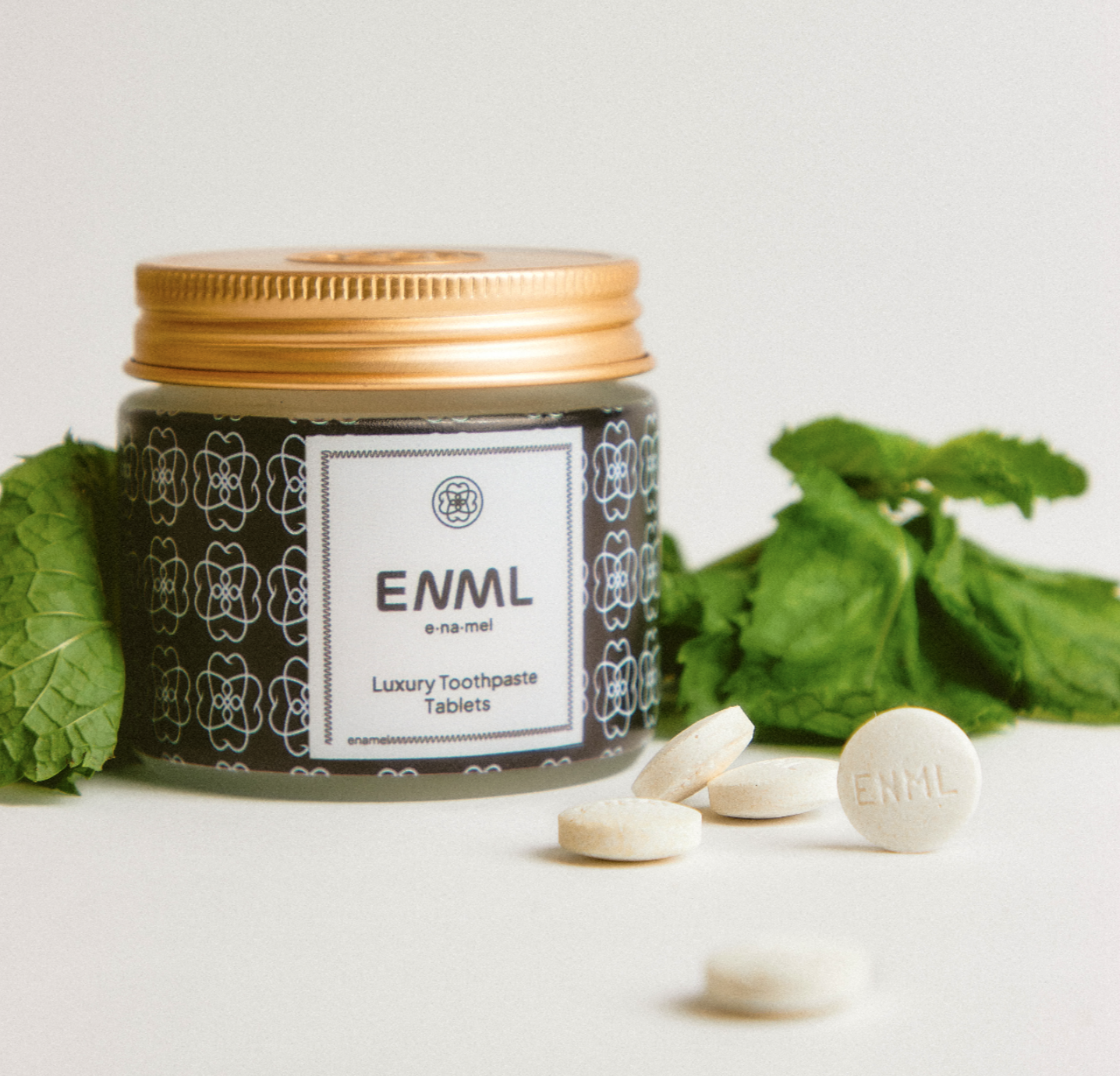If you’re looking for an alternative to traditional toothpaste, you have a couple of different options. While toothpaste is the most popular teeth-cleaning product, toothpaste powders and toothpaste tablets are just as effective and can be a better option for many people. As you consider ditching your toothpaste, take a moment to review our guide to the differences between toothpaste tablets, powders, and pastes.
What Is Toothpaste?
As almost everyone knows, toothpaste is an oral hygiene product that comes in the form of a paste or gel contained in a tube. Typically, toothpaste will include a tooth-safe, mild abrasive that removes surface stains and debris from your teeth. Most toothpaste formulas also use a flavoring agent, humectants (ingredients that prevent the toothpaste from drying out), a detergent that causes the toothpaste to foam, and a thickening agent to keep all the ingredients together.
What Is Toothpaste Powder?
Toothpaste powder has been around for hundreds of years, and in modern times, it’s typically made from ingredients you could find at home, such as flavorings, coarse salt, baking soda, and activated charcoal powder. Once the powder is mixed together, you’ll spread a small amount (about an eighth of a teaspoon) on a wet toothbrush and brush your teeth like you normally would. While some people make toothpaste powder at home, it’s often sold online and occasionally in specialty stores.
What Is a Toothpaste Tablet?
Toothpaste tablets contain similar ingredients used in toothpaste, but as a more natural toothpaste alternative, they often don’t contain fluoride. Since tablets don’t use water like toothpaste, the ingredients are mixed together before being pressed into a tablet shape. When you use a toothpaste tablet, you’ll bite down on the tablet, causing it to turn into a powder. Once it turns into a powder, just use a wet toothbrush to brush your teeth. As a hygienic toothpaste alternative, toothpaste tablets are safe to use and effectively clean your teeth like standard toothpaste.

Toothpaste vs Toothpaste Powder vs Toothpaste Tablets: How Are They Different?
All forms of toothpaste will clean your teeth and support proper oral hygiene, regardless of whether it comes in a tablet, powder, or gel. Each of them also requires you to use a toothbrush, so you don’t have to make any major changes to your routine if you decide to switch to a powder or tablet. Generally, each option offers similar effectiveness in plaque removal and cavity prevention.
Though these products are similar, they do have some differences that could affect your choice to buy them. The primary differences between them include:
-
Accuracy of dosage: Most people use more toothpaste than they need, which, alongside being wasteful, can be dangerous to children. For example, a study of how much toothpaste parents give to small children found that parents in the US, UK, and Germany dispensed more than the recommended .25 grams of toothpaste on average. Exceeding the recommended amount can overexpose children to fluoride, resulting in adverse effects on their teeth. Unlike toothpaste or powders, toothpaste tablets offer the same dose of ingredients with every use.
-
Use of fluoride: Almost all major toothpaste brands incorporate fluoride into the majority of their toothpaste products. However, the use of fluoride in toothpaste tablets and powders is far less common. Instead of fluoride, these products tend to use a calcium-based compound called micro-hydroxyapatite, which strengthens tooth enamel and reduces the risk of tooth decay. Keep in mind that some tablets and powders use fluoride, so always check the ingredients list before you buy!
-
Shelf life: Toothpaste tablets and powders tend to last longer than toothpaste. The reason for their longer shelf life comes down to the use of water in toothpaste, which can lead to bacterial growth. The lack of water in tablets and powders reduces their risk of contamination and increases their shelf life.
-
Ease of use and cleanliness: Paste, gel, and tablets are all easy to use, without any major differences between them other than how you apply the product. Though they’re all fairly easy to brush your teeth with, toothpaste tablets tend to be the least messy option. Powder is easy to spill, and if you’re not paying attention, toothpaste could fall off your brush onto the floor, your clothes, or a counter. In contrast, tablets are in a solid form until you chew on them, reducing the risk that you make a mess by accident while brushing your teeth.
-
Sustainable packaging material: Except for some sustainable toothpaste products, most toothpaste is stored in plastic tubes that can’t be recycled, resulting in lots of plastic waste. In contrast, toothpaste tablets and toothpaste powders tend to come in recyclable glass jars. While you might find some of these products in plastic cans or bags, tablets and powders tend to be more environmentally friendly due to to the more common use of sustainable packaging materials.
- Travel friendliness: If you’re planning on flying, toothpaste can be more difficult to travel with, as TSA only allows 3.4 oz of toothpaste to be brought in a carry-on. Even if you store the paste in a checked bag, the cap could break and cause the toothpaste to get all over your suitcase. Similarly, toothpaste powder could get out of its packaging during travel. Toothpaste tablets tend to be the most travel-friendly, as they’re stored in secure packaging, and the tablets are unlikely to break in your bag.
Toothpaste Tablets vs Toothpaste Powder vs Toothpaste Comparison Chart
If you want a quick breakdown of the difference between toothpaste powder, toothpaste tablets, and standard toothpaste, take a moment to review our handy chart below:
|
Traditional Toothpaste |
Toothpaste Powder |
Toothpaste Tablets |
|
|
Cavity Prevention |
✅ |
✅ |
✅ |
|
Plaque Removal |
✅ |
✅ |
✅ |
|
Multiple Flavor Options |
✅ |
✅ |
✅ |
|
Consistent Dosage |
✘ |
✘ |
✅ |
|
Tendency to be Fluoride-Free |
✘ |
✅ |
✅ |
|
Easy to Fly With |
✘ |
✅ |
✅ |
|
Usually in Eco-Friendly, Non-Plastic Packaging |
✘ |
✅ |
✅ |
|
Low Risk of Mess |
✘ |
✘ |
✅ |
|
Longest Shelf Life |
✘ |
✅ |
✅ |
Are Toothpaste Tablets Better Than Traditional Toothpaste or Toothpaste Powder?
Due to the many benefits of toothpaste tablets, they tend to be a better option for most adults. For instance, their eco-friendly packaging, lack of mess, longer shelf life, convenience for traveling, and more accurate dosage than toothpaste or powder sets them apart from other teeth cleaning products. Since all three options are similarly effective, you can feel confident that you’re getting the same quality of cleaning with a toothpaste tablet. The lack of fluoride in most toothpaste tablets also makes them a better option for those who’d prefer an alternative to fluoride-based toothpaste.
That said, toothpaste tablets may not be suitable for individuals who have difficulty chewing or suffer from a jaw condition. They’re also not recommended for very young children, as they need to be chewed first and could be swallowed.
Experience the Benefits of Luxury Toothpaste Tablets With ENML
Whether you’re trying to switch to a toothpaste without fluoride, want toothpaste tablets for travel, or are interested in a more eco-friendly toothpaste, ENML can help. Our luxury toothpaste tablets use micro-hydroxyapatite instead of fluoride, arrive in environmentally friendly packaging, and are extremely easy to travel with. Alongside our remineralizing toothpaste, we also offer alcohol-free and fluoride-free mouthwash tablets that you can use to freshen up your breath while deeply cleaning your mouth.
Check out our luxury toothpaste and mouthwash tablets today! If you have any questions about our luxury oral hygiene products, please contact us.






